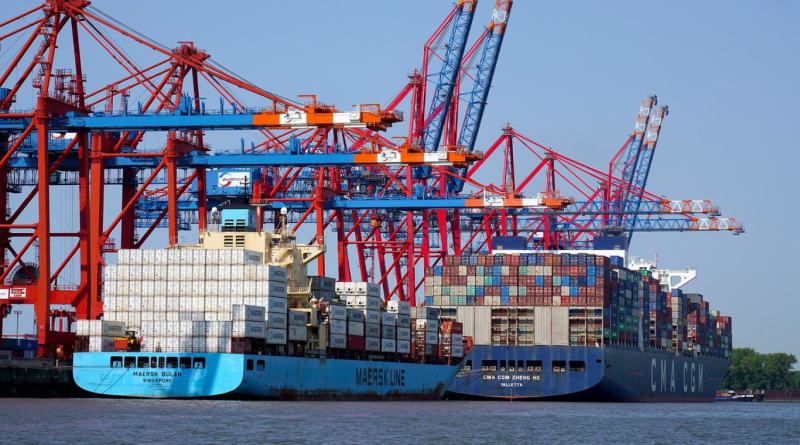6 Key Challenges in Global Supply Chain Management
Global supply chains have grown more complex, presenting businesses with numerous challenges to maintain efficiency, security, and adaptability. From geopolitical tensions to evolving digital threats, businesses need to stay agile to navigate these supply chain challenges. Below are six critical challenges disrupting supply chains worldwide.
1. Supply Chain Disruptions Due to Geopolitical Instability
Geopolitical events can disrupt the flow of goods and services, leading to delays and higher costs. Key examples include:
- Trade wars: U.S.-China tariffs increased costs for multiple industries, including electronics and automotive sectors.
- Sanctions: Economic sanctions against countries can cut off critical supply chains, especially in energy and raw materials.
- Political unrest: Conflicts, such as the Russia-Ukraine war, have disrupted energy supply lines and spiked commodity prices.
Geopolitical tensions, such as trade wars and economic sanctions, continue to disrupt global supply chains, forcing companies to adopt strategies like regionalization and diversifying suppliers to reduce risks and ensure stability
2. Logistics and Transportation Bottlenecks
Bottlenecks in global logistics create significant delays in supply chains, often due to:
- Port congestion: Overburdened ports slow down shipping schedules, with container shortages adding to delays.
- Labor shortages: A lack of truck drivers and warehouse workers exacerbates delivery delays.
- Global incidents: The Ever Given blockage in the Suez Canal in 2021 halted nearly $9.6 billion worth of goods daily.
Companies need to explore multi-modal transport solutions and diversify logistics partners to mitigate these issues.
3. Demand Fluctuations and Forecasting Challenges
Accurately predicting demand is one of the hardest aspects of supply chain management. The pandemic made this even more difficult:
- Bullwhip effect: Small shifts in consumer demand create larger ripples across the supply chain, leading to inefficiencies.
- Misaligned forecasts: As seen in the semiconductor industry, incorrect demand forecasting during the pandemic led to production cuts, followed by massive shortages when demand rebounded.
- Unpredictable consumer behavior: Rapid shifts in demand for goods like electronics and home goods make long-term forecasting a challenge.
To address these issues, companies are investing in demand planning software and AI-driven predictive analytics.
4. Raw Material Shortages and Rising Costs
Supply chain issues are compounded by shortages of key raw materials. Contributing factors include:
- Semiconductor shortages: Affecting industries like automotive and electronics, leading to production delays and increased costs.
- Price surges in metals: Lithium, cobalt, and other essential materials for EVs and batteries are in short supply.
- Global supply disruptions: The pandemic and geopolitical factors have constrained the flow of raw materials, driving prices higher.
The global semiconductor shortage has severely impacted the automotive sector, with estimated losses reaching $210 billion in 2021 alone.
5. Supply Chain Digitalization and Cybersecurity Risks
The push toward digital supply chains brings efficiency gains but also heightens security risks. Common vulnerabilities include:
- Cyberattacks: The 2021 Colonial Pipeline attack is a prime example of how digital threats can paralyze supply chains.
- Data security: As more businesses shift to cloud computing and IoT technologies, the risk of data breaches increases.
- Lack of cybersecurity investment: Many companies have not fully integrated cybersecurity into their supply chain strategies, leaving them exposed.
Adopting blockchain and AI-driven security solutions can mitigate these risks.
6. Sustainability and Environmental Regulations
Sustainability goals are transforming how businesses manage their supply chains. However, these changes come with challenges:
- Regulatory compliance: Strict environmental laws, such as the EU’s Green Deal, push companies to reduce carbon emissions, adding operational complexity.
- ESG demands: Investors and consumers are demanding greater transparency around sourcing and labor practices, increasing pressure on businesses to meet ethical standards.
- Cost of sustainability: Transitioning to eco-friendly supply chain practices, such as adopting renewable energy or carbon-neutral shipping, can be costly and resource-intensive.
To stay competitive, companies are incorporating circular economy principles and improving waste management across their supply chains.
Managing a global supply chain today requires companies to overcome significant challenges, from geopolitical risks to sustainability requirements. By understanding these six critical issues, businesses can take proactive steps to build more resilient and adaptive supply chains, ensuring long-term success.
